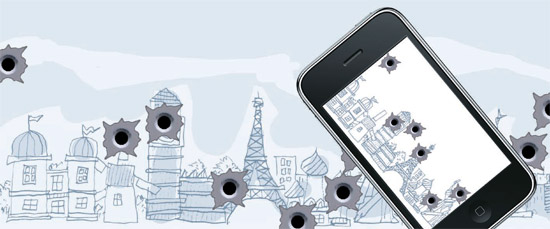The dark side of smartphones

His classmates constantly take pictures of the pop star and broadcast his every action. When he takes his class partner out, they post on SNS, “The star kidnapped his class partner.” They are the “social media reporters.”
The star is conscious of the reporters around him, and his agency responds sensitively to the posts. The classmates treat their smartphones like weapons. They turn his life upside down by sharing photos and text messages, and when they are displeased, they threaten that they will make the disclosures online.
Is the drama exaggerating the reality? In fact, the reality is even crueler. Ordinary people get involved in unprecedented complications and consuming debates because of smartphones. Within the network that connects anonymous users, even an innocent citizen can start a malicious act as a joke.
An unscreened and unripe sense of justice is often vented in vulgar language. An anchorwoman posted on a social network that she would commit suicide. Her post was responded to with ridicule and curses.
When she really killed herself, people began cursing at those who condemned her. People don’t seem to care much about the sentiment that she was devastated by the profanity.
Lately, it was proved that smartphones and social networks can be abused in crimes in a “smarter” way. A man in his 20s made prank calls to the U.S. emergency number 911 “as a joke,” and his threats led to the lockdown of nine schools in New Jersey. He threatened that he would kill students at a high school with an AK-47 assault rifle, and the police even mobilized helicopters and police vehicles.
In this heinous crime, he used a smartphone application that makes free international calls and hides the phone number of the caller.
He was supported and encouraged by a network of a number of faceless friends from a chat room named “Prank Calls.” They even taught him English expressions and enjoyed the crime together.
As it turned out, the U.S. police sent a bill for the helicopters and police officers mobilized in response to the prank call.
The suspect will be prosecuted and have to pay the bill. I doubt the anonymous network that encouraged the crime is willing to share the responsibility.
Smartphones have enabled random communication. We once hoped that mass-to-mass communication would reduce isolation and expand understanding. However, we hear more “horror stories” now. We need to begin suspecting the whisperings of strangers we meet on social networks.
*The author is an editorial writer of the JoongAng Ilbo.
by YANG SUNNY










with the Korea JoongAng Daily
To write comments, please log in to one of the accounts.
Standards Board Policy (0/250자)